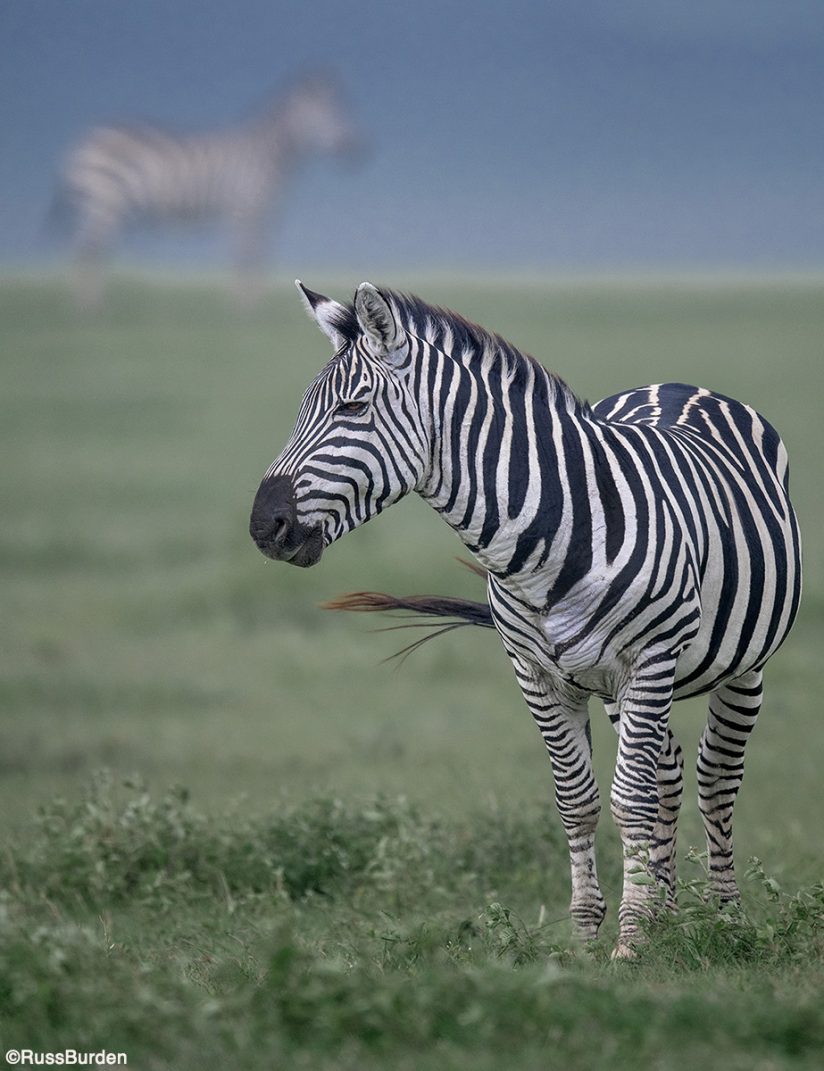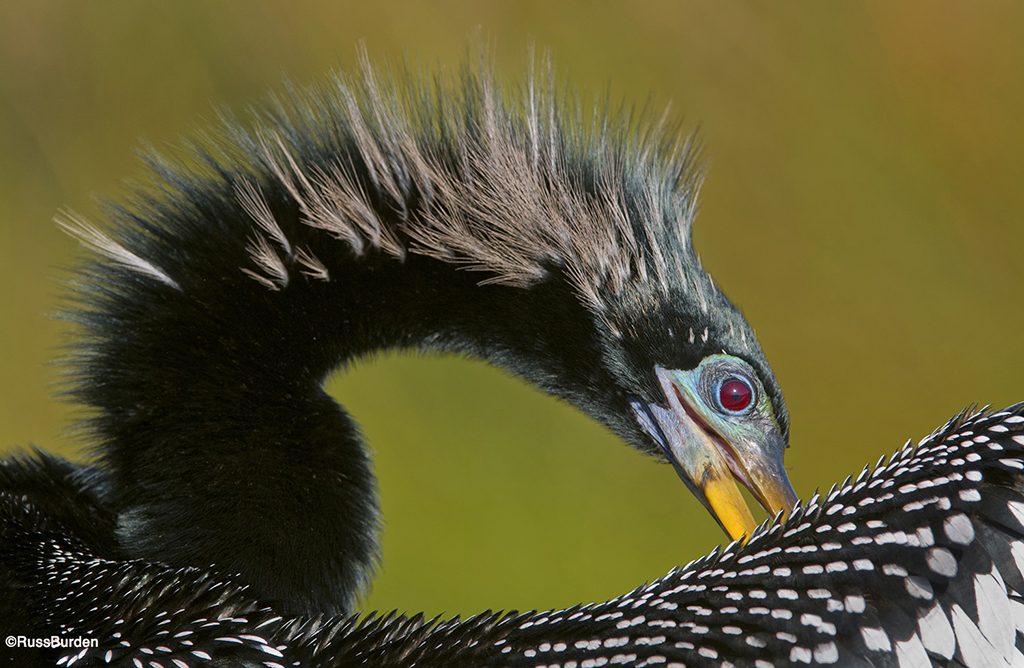A good photographer has a lot in common with an accomplished sculptor. Both must meticulously chip away at what confronts him or her and chisel away distracting elements until only the essentials remain. Armed with the camera, the photographer sorts out the chaos and whittles away the negative to remove clutter. Just as a sculptor smooths over the edges of the final piece, we have to bring harmony to all we see to round out the final composition before we press the shutter.
In regard to photography, I’m a stout proponent of less is more. This brings me to the point of this week’s tip—KISS: Keep It Simple And Splendid. By judiciously creating a beneficial camera angle or by being selective about what lens to use, my goal is to create images with impact. I want my wildlife subject to stand out from the background. I don’t want distractions that prevent the viewer from seeing the animal. I want the light angle to be complementary to the subject. I want the animal to make contact with the viewer.
There are a number of animal photography techniques that allow a photographer to create simple and splendid images. I’ll share some this week and others in Part 2 next week.
- Move in close, use a long lens or open the aperture. These three strategies provide less depth of field. Less depth of field creates a less distracting background so the animal becomes prominent in the image.
- At sunrise and sunset, or when the clouds are bright and the subject is in shade, silhouette the animal against a neutral background and it will stand out.
- With moving subjects, pan your camera at slow shutter speeds to keep the main subject sharp and blur out the background.
- Try to get as close to your subject so the entire animal fills the frame to simplify the composition and eliminate distractions.
- Concentrate on details. Think about making abstract patterns or work just parts of the animal into the composition.
By no means are these the only ways to achieve simplicity in an image, but begin with these to get you started and see next week’s tip for more.
Every time you raise your camera to your eye, remind yourself to not only look at your subject in the viewfinder but to also concentrate on what you see to the left, right, above and below the subject. Is there an obtrusive twig in the top right corner? Is there a glaring bright spot somewhere in the frame that’s detrimental to the image? Does part of another animal’s body awkwardly take up space at the edge of the viewfinder? Does another animal merge with your subject? The next time you go into the field, remind yourself to check the entire viewfinder for distractions before you press the shutter release. Keep the above information in the forefront of your mind to create images that are simple and splendid. Every time you think about it, you’ll be reminded of just how satisfying a KISS is.
Use Depth Of Field To Your Advantage

In the image of the dominant zebra in the foreground with the other echoed in the background, my initial composition found me framing the closer subject using a horizontal format. In being a firm believer in “Exhausting All Possibilities,” I turned the camera vertically to see if I could find a good vertical image. As I moved the camera around to find a composition, I noticed the out of focus zebra on the skyline. I immediately opened my lens to ƒ/4 to minimize the depth of field. This way, the only sharp area would be the foreground zebra. Just as I was ready to press the shutter, I was bestowed a golden parachute when I saw the tail of the primary guy point to the one in the background. If it weren’t for the out of focus zebra echoed in the background, the photo would simply be another basic vertical of a zebra in the grass.
Silhouettes

Silhouettes can make very dramatic images that turn out simple and splendid. The idea is to reduce the subject to its basic shape and reveal no detail. The animal is photographed against a much brighter background and the exposure is based on the bright area. That’s why the subject is void of detail. When you expose for the background, the dark foreground subjects become outlines of shape and form. The more intriguing the shape, the more successful the image. Bold and graphic subject matter that can be easily recognized works well. Animals juxtaposed against vivid sunsets are the most typical and tend to have a lot of impact.
Panning

Use slow shutter speeds to exaggerate the motion of a moving subject. When performed precisely, painterly results can be achieved. When you pan, follow the motion of the subject with your camera to blur out the background and also exaggerate any motion made by the animal. The caveat is you want to record a sharp rendering of the head and eye. This means the subject can’t bob up and down as you move the camera perpendicular with the animal. To perform a successful pan, lock onto the subject and follow it at the same speed at which it moves. This tactic helps keep the focus locked on the animal as it moves. Use a smooth and fluid action. The results can be erratic as many variables must fall into place to create a successful pan. Make a lot of images at various shutter speed and f-stop combinations to get the look you desire.
Get As Close As Possible

Certain animals allow you a close approach. Those that dwell in cities and constantly see people become acclimated. The same sometimes holds true in national parks. Regardless, don’t be foolish and try to get too close as you may wind up hurt or you can stress the animal. That being said, judge each subject on its own merit as to how close you can get. The closer you get, the more you eliminate the background. This works great when the background is busy and has lots of distractions. The more you fill the frame with the animal, the cleaner the image becomes. Check the DOF preview button to see the result based on the aperture at which the lens is set. When you fill the frame and eliminate confusion in the image, it becomes sweet and splendid.
Concentrate on Details

I was walking the Anhinga Trail in the Everglades, so I thought it appropriate to photograph the first anhinga I encountered. In making many pedestrian images, I attached a longer lens to concentrate more on the details of the feathers and its intriguing eye. The long lens contributed to the out of focus green background and also allowed me to highlight the features of the anhinga I found most spectacular. Again, Exhaust All Possibilities.
Be sure to catch next week’s Tip of the Week for Part 2 of the Kiss The Animals series.
Visit www.russburdenphotography.com for information about his nature photography tours and safari to Tanzania.
The post KISS The Animals, Part 1 appeared first on Outdoor Photographer.















